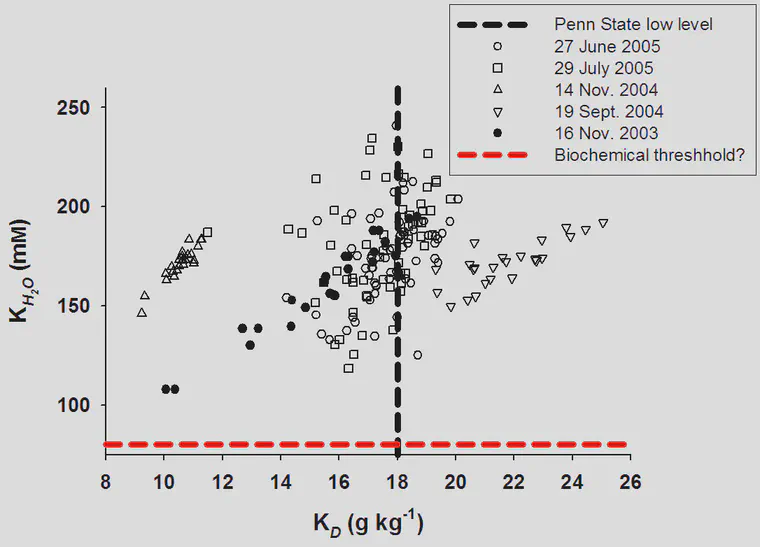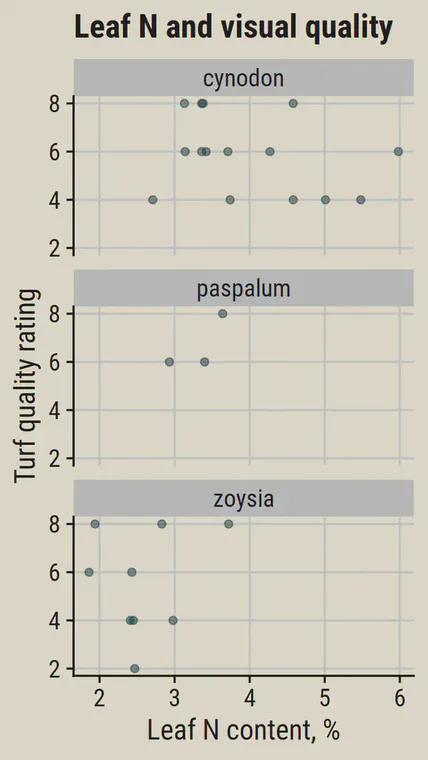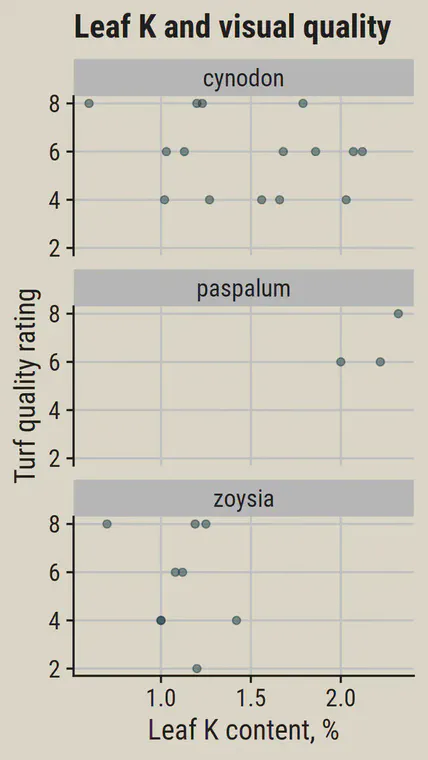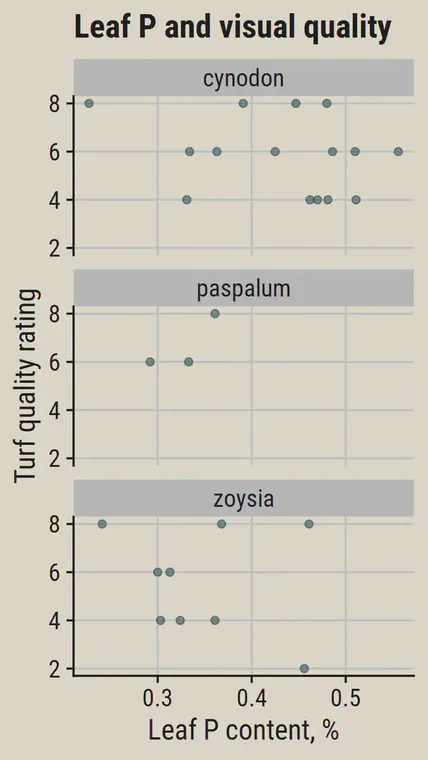A turfgrass tissue testing manifesto
Doug Soldat joined me for an ATC Office Hours discussion about leaf nutrient analyses (tissue testing) for turfgrass. I’ve embedded the video at the end of this post, link to it here, or listen to the podcast version here.
There were a couple attempts at summarizing our conversation (Take 1, Take 2), and I’ve had a go at summarizing it in this post. But my summary has turned into a bit of a manifesto.
Frank Rossi has been asking about tissue testing for a long time. I’ve given answers that are explained especially in section 4 of this post about tissue testing. When he asked Doug Soldat in a recent podcast about tissue testing, again, Doug made a joke about how I might respond by writing to him, and we decided to have a discussion about this.
I’d summarize our conversation with these points:
- Neither of us think it’s a particularly effective practice to chase target leaf tissue concentrations.
- Doug recommends regular but infrequent testing of good-performing turf at your site for the purpose of developing a reference dataset for your site of what nutrient levels are normal.
- I don’t recommend this testing because it is not clear to me how these data can be used by a turf manager once the reference dataset is developed.
- Doug points out some specific cases of lower K in Poa annua leaf tissue being associated with higher anthracnose disease incidence, and higher K in creeping bentgrass leaf tissue being associated with higher snow mold disease incidence.
- I am aware of those experiments and that K has an affect on disease incidence in those cases. It seems clear that K supply to the grass affects the disease intensity. I’m not so confident that the specific leaf K levels identified in those experiments would transfer to different locations (where there is different soil, weather, and management).
- I agree with Doug that it might be useful for turf managers to develop their own site-specific normal dataset, but I don’t recommend it because 1) I’m not optimistic about the data being useful and 2) it costs money to generate the data and I expect high quality turf can be produced with an efficient nutrient supply by completely ignoring site specific tissue testing reference ranges.
I’ll elaborate here on a couple points that Doug and I talked about.
1. Cause and effect
It is turfgrass performance, or playing surface performance, that matters. Turf management is about creating and maintaining a surface. The job is not about maintaining leaf nutrient levels within a certain normal range.
For leaf nutrient levels to be important, or for them even to be useful as a surrogate marker, there needs to be a clear cause and effect relationship between leaf nutrient levels and turfgrass performance. That is, changes in leaf nutrient content would need to cause a change—an effect—in turfgrass performance. Apparently there are a lot of people who assume there is such a cause and effect relationship. Twenty years ago, I thought there was something like a cause and effect relationship there. But I sure can’t find one, and I no longer assume that there is one. Once this assumption of a cause and effect relationship is gone, tissue testing doesn’t look so useful.
Here’s a chart I made in 2005. It shows tissue K from bentgrass plots that received widely varying amounts of K fertilizer and that consequently had different soil test levels for K. Even across that wide range of tissue K, the bentgrass quality was fine. If I find other charts from that era with turf quality on the y-axis, I’ll share them. They look the same, in that there is no relationship between tissue K and turfgrass quality.

The charts below are more recent data; these are for 27 golf course putting greens in Thailand with tissue tests and visual quality ratings in a project I did in late 2021 and early 2022 with Brad Revill. Here’s tissue N.

You’ll notice that the leaf nitrogen content varies across what we might consider a normal range for those species, but there does not appear to be any relationship between turfgrass performance and the leaf nitrogen content.
The rating scale we used assigns scores by these criteria.
10: excellent, can’t imagine how it could be improved
8: very good, almost perfect with a few minor blemishes
6: good, acceptable conditions
4: fair, easy to see how it could be made better
2: poor, awful conditions, would be difficult to find a hole location
How about for potassium (K)?

As you see, this could be a bit of a problem. If the turf quality can range across the range of fair to very good, but the tissue N, K, and P aren’t clearly related to that quality, then what value are we getting from knowing the leaf content of those elements?

2. Systematic use of tissue data to improve fertilizer recommendations
I’ve noted the problem with cause and effect. “But Micah,” you may say, “certainly there are elemental levels in the leaves that must be indicative of a deficiency, a toxicity, or a turf quality problem.”
I agree with that. A problem remains, however. By the time an abnormality of that degree is detected in the leaves, the grass already has a problem. What we end up doing is a postmortem type of analysis.
As I’ve collected more and more tissue test data, and tried to use it to make fertilizer recommendations, I’ve struggled to come up with a systematic way to do that. I’m not optimistic that collecting more tissue data on a site-specific basis solves this problem.
If you haven’t watched it yet, here’s the discussion.